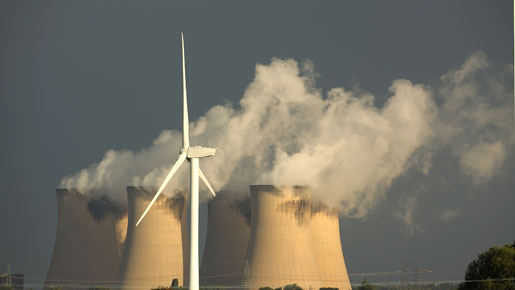
In a speech on “Shell scenarios for the 21st century”, van der Veer said one of the three hard truths facing the world was a big rise in demand as the global population rose from around six billion to nine billion by mid-century.
He told the EastWest Institute think-tank in Brussels that Shell saw “about 50 percent more demand for energy in the world in the coming 25 years, and a doubling of energy (demand) by 2050”.
The second hard truth was that most renewable energy sources were still far too expensive, even compared with higher prices for oil, gas and coal.
“Renewables are still too expensive. They will come, I’m not self-serving, I’m not defensive but it will take a very long time” either to achieve the technological breakthroughs required or to build many more nuclear power stations, van der Veer said.
“You see that we have a lot of tensions. The world demands more energy,” he added. “Renewables may come to a solution but it will take decades before it is big.”
The third truth was that the reserves of oil and gas that were easily accessible and close to the markets where they were required, were depleting. Extracting new supplies would require much larger investments per unit than in the past.
Van der Veer said Shell saw two broad scenarios: a scramble in which countries “fight for themselves” on energy policy and set their own rules with minimal cooperation, or a “blueprint scenario”, where governments cooperated to create large markets with common standards.
In the first, much time would be lost on making inroads into cutting carbon emissions. The second would be much more favourable to pricing C02 in a consistent way.
“As a company, we think it is much better that the blueprint scenario will happen,” van der Veer said.
“There’s still a lot of confusion about the role of governments and the role of companies,” he added, citing the controversial development of oil sands in Canada.
“If it is open, I fail to see why we should not do that,” van der Veer said.
Canadian oil sands mining projects are seen as a key source of North American energy supply for decades to come, but environmental groups have criticised their impact on water use, carbon emissions, wildlife and health.
“If the Canadian government says ‘we do not open oil sands’, then I don’t think that the world will use less energy,” van der Veer said.
“I think energy demand will stay the same, so the right question to ask is: if the Canadian government doesn’t open oil sands for exploitation, what will be the balance of fuel? I give you my modest opinion, I think it is either coal or nuclear, and you make the choice.”
Oil sands are a mix of sand or clay, water, and extremely heavy crude oil. The oil is difficult and costly to extract and is only viable when the oil price is high.
Canada’s oil sands are the target of more than $100 billion of investment as the world’s oil industry aims to cash in on the need to feed growing demand for secure oil supplies, especially in the United States.
Mined oil sands from Shell, Syncrude Canada Ltd. and Suncor Energy Inc, are processed into about 800,000 barrels of refinery-ready light crude a day, which is roughly 30 percent of the country’s overall oil output.
Output is expected to triple by the middle of the next decade.

